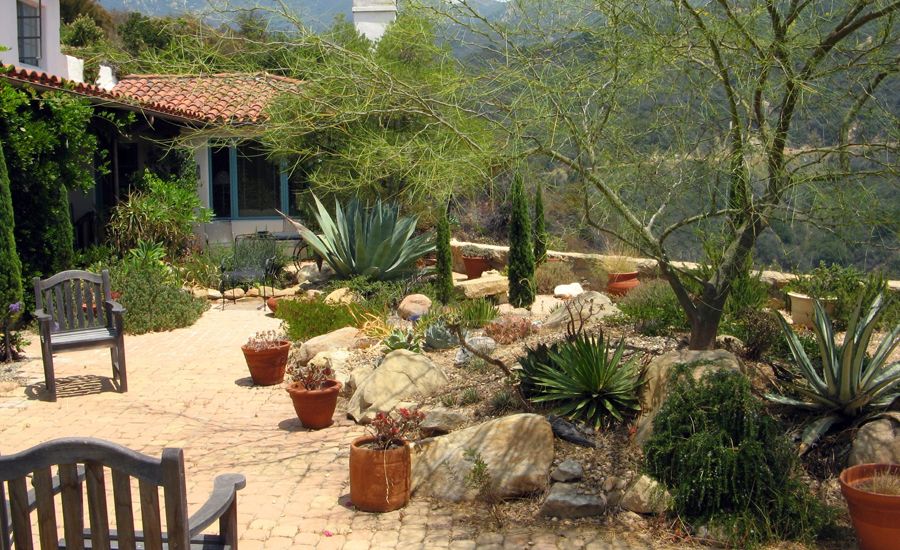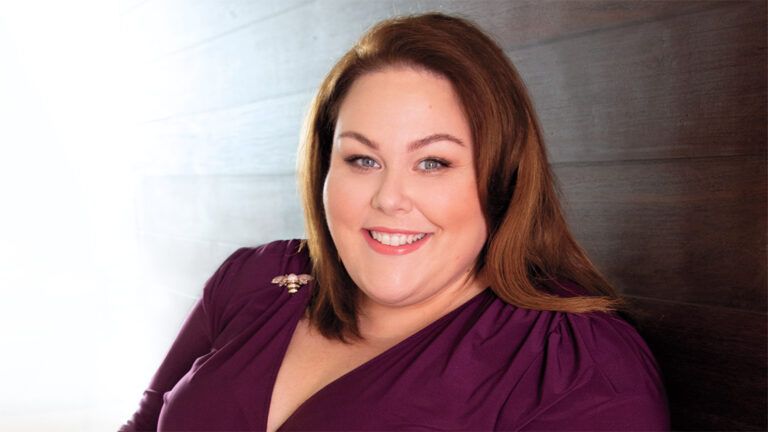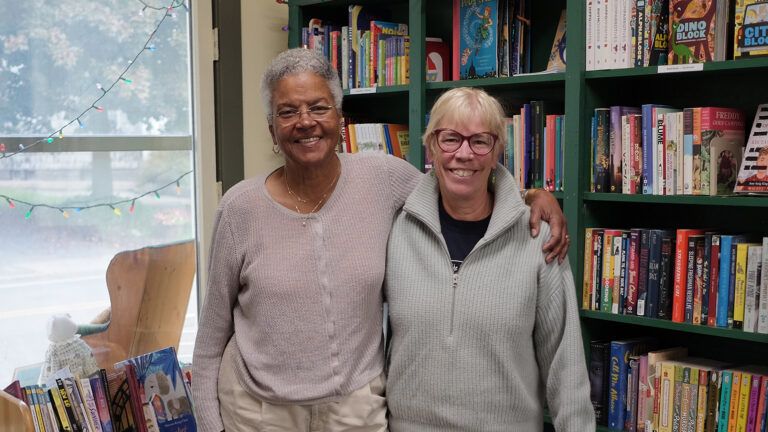Genesis
What we need is here.
—Wendell Berry
I am sitting in the center of a labyrinth at Mount Calvary, a monastery in Santa Barbara, California. The labyrinth, a walking path for prayer, is painted on a concrete patio in a garden behind an old building that now serves as a retreat house. At the edge of the labyrinth are native plants and flowers, including a bright purplish bush called woolly blue curls, where a hummingbird—oblivious to my presence—feeds. Crows, sacred to the Chumash people, who once inhabited this place, fly from the gnarled branches of live oaks to the heights of eucalyptus trees as they caw and search for food. There is abundant bougainvillea, fragrant lavender and rosemary, bright mountain lilac, and coastal sunflower. Along the stone pathways are statues of the Virgin Mary and saints, often paired with benches for those who wish to sit in prayer-filled solitude. A creek, actually a dry bed due to California’s extended drought, runs along the base of the hillside below, where, I suspect, rattlesnakes make their home.
This is a contemplative place. But, oddly enough, it is not terribly quiet. Across the creek, schoolchildren play, cheering for their teams. Not far away, someone stands in back of a building talking on her cell phone. The museum nearby will open soon, and workers are making ready for the day. The sound of traffic on Los Olivos Street is muffled by the trees and shrubs but still obvious. Joggers on the road chat with one another during their morning run. Tourists talk behind the wall that separates the monastery from the mission next door. Neighborhood gardeners mow lawns and blow leaves.
Mount Calvary has not always occupied this particular place. Years ago, I often visited its original location—fifteen mostly vertical acres of mountaintop above Santa Barbara with sweeping views of the Pacific Ocean. When sitting on the porch on a clear day, you looked out toward the Channel Islands and down upon the city. There were distant sounds, voices traveling across the canyons or the faint rumble of the freeway far below, like indistinct prayers rising to the skies. Mostly, it was quiet—stunningly so—the immediate silence broken mostly by birdsong, bells, or monastic chant. So high up, that otherworldly place felt a bit like heaven.
But Mount Calvary’s mountaintop paradise is no longer. In November 2008, the California winds blew hot, and a wildfire destroyed it all. As the flames engulfed their home, the terrified monks fled downhill to the city. The sisters of St. Mary’s Convent, an order whose house sits behind the Santa Barbara Mission in a busy residential area, took them in. At St. Mary’s, the sisters and brothers lived together, sharing monastic community. Eventually, the monks received an insurance settlement for the old Mount Calvary and faced the decision of whether to rebuild on the top of the hill. After much prayer, they opted to sell the scorched site in favor of finding a different location. The sisters, with only a few women remaining in their small community, offered their property to the brothers. Thus, St. Mary’s Convent became the new Mount Calvary, and the brothers took up permanent residence in the city.
From the labyrinth, I look up and see the peak where the monks used to live. When they gazed down from the heights above, this spot would have been just a speck in their commanding perspective; a person sitting where I sit would have been invisible to them. Now they live in the world, with everything right around them, no longer above it. They have become part of the view, not distant observers of it. Up there, they would not have heard the children, joggers, or tourists or noticed the persistent hummingbirds and noisy crows. Whereas once Mount Calvary offered retreatants the capacity to see widely and dream vast dreams of God, the new monastery invites guests to feel the world more deeply and experience the intimacy of Spirit.
If I think about what was lost, about the beautiful old monastery, I feel sad. I miss the majestic views, the vistas of mountain and ocean, with the towering sense of being above the world. But here, in the center of the labyrinth, peace prevails. The morning fog is lifting. I kick off my shoes. The sounds provide a kind of gentle companionship, reminding me that I am not completely alone with my prayers. Sitting on the ground, I feel warm solidarity with the world of nature and the worlds of all those traveling nearby. And I feel that other presence as well, the heartbeat of love at the center of things, the spirit of wonder or awe that many call God. Any sense of monastic isolation has been overcome with a sense of intimate connection with all that is around, things seen and things less tangible. I, like the monks, am not above. Here, I am with the world. And I find that God is with me.
Maybe coming off the mountain is not a bad thing after all.
 Excerpted from Grounded: Finding God in the World, A Spiritual Revolution by Diana Butler Bass. Copyright © by Diana Butler Bass. Published by HarperOne, an imprint of HarperCollins Publishers.
Excerpted from Grounded: Finding God in the World, A Spiritual Revolution by Diana Butler Bass. Copyright © by Diana Butler Bass. Published by HarperOne, an imprint of HarperCollins Publishers.




